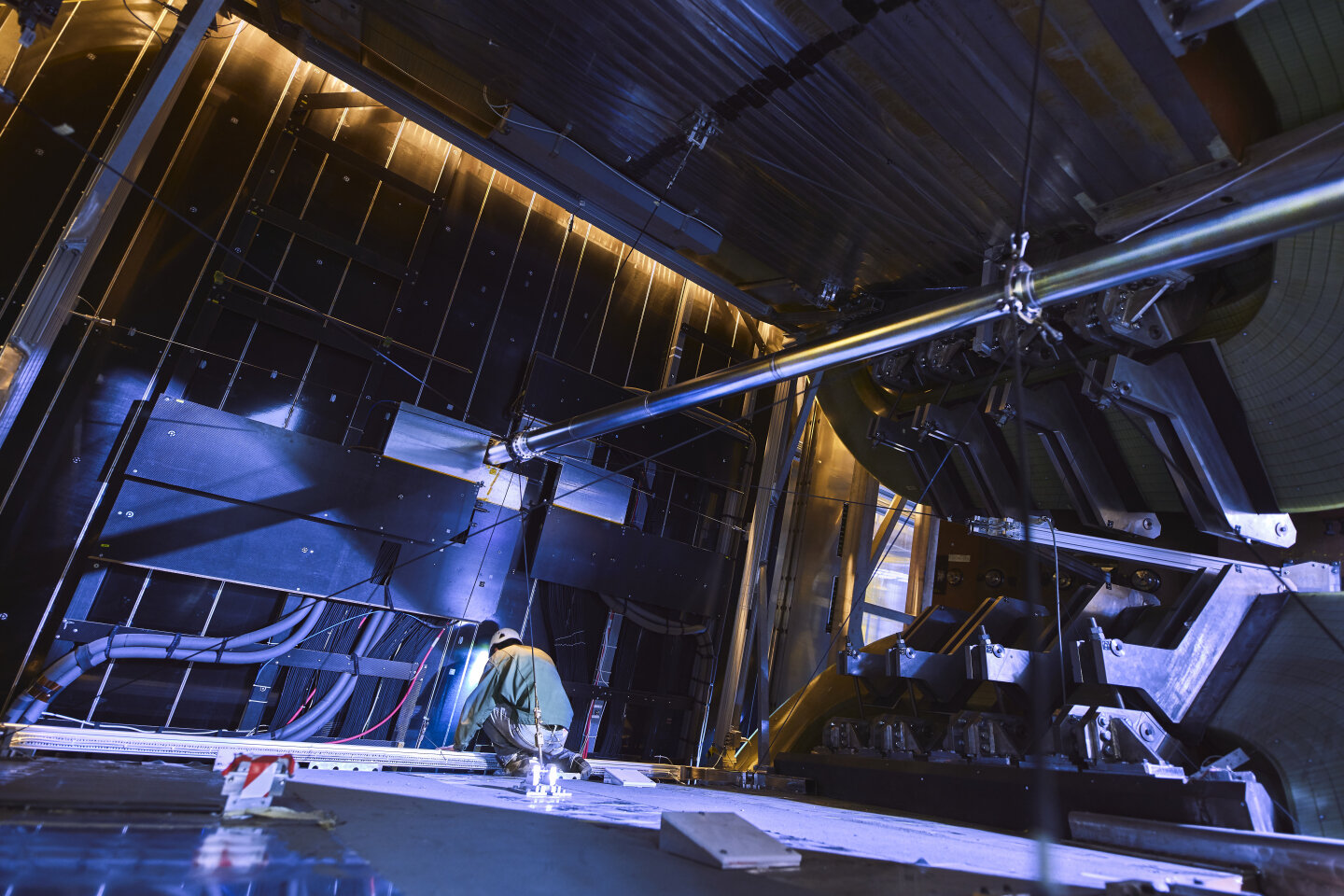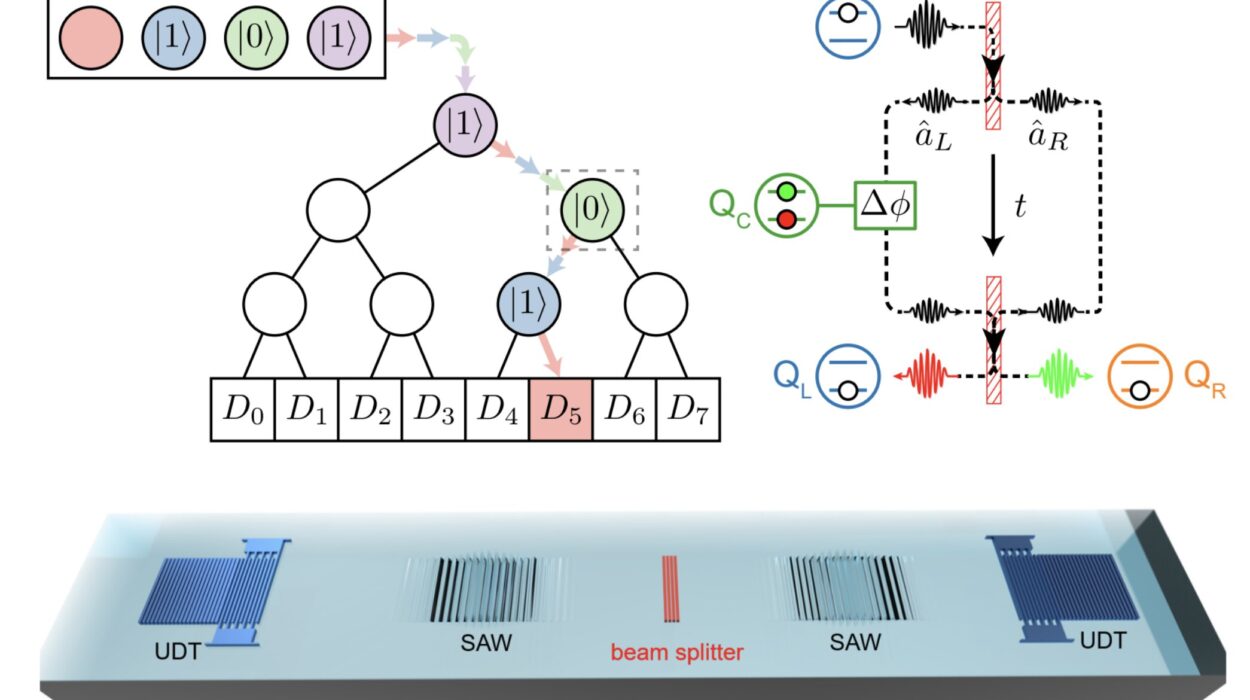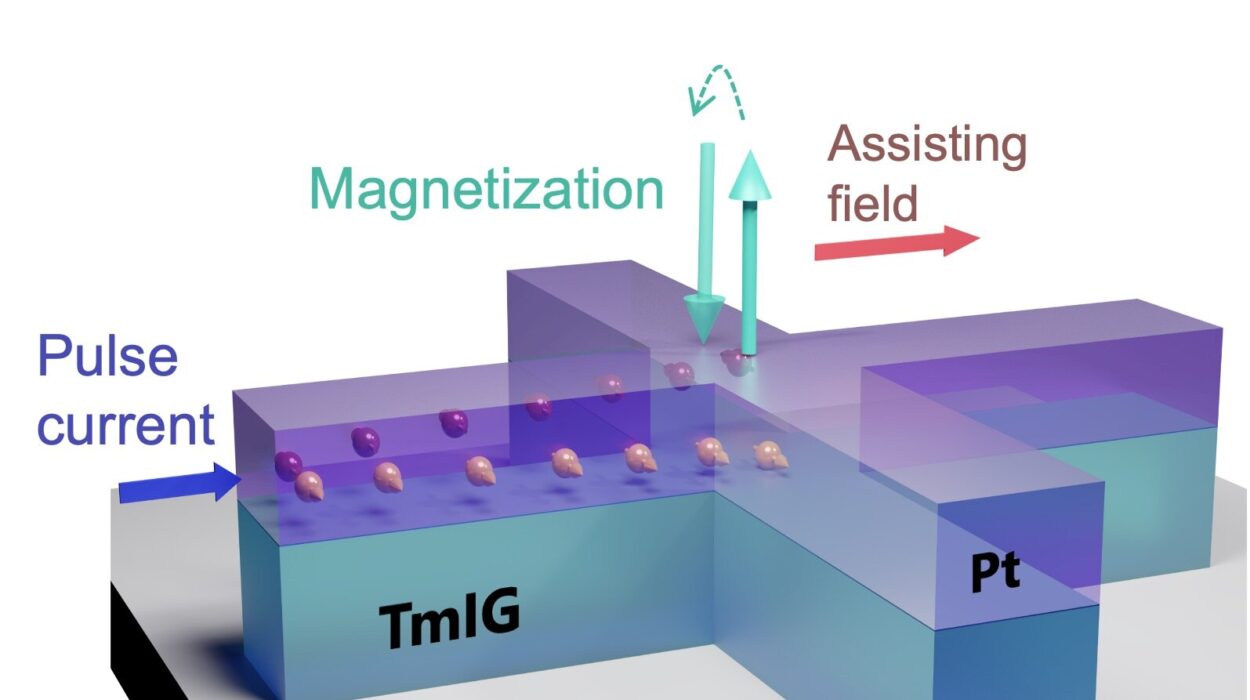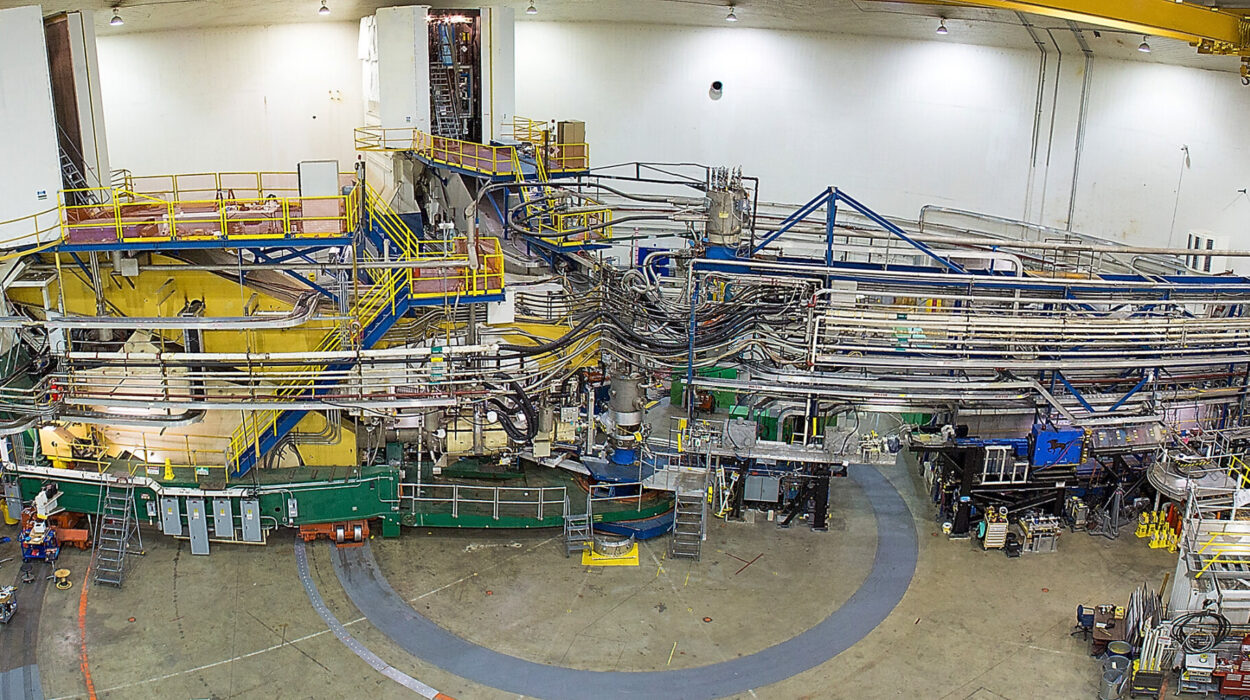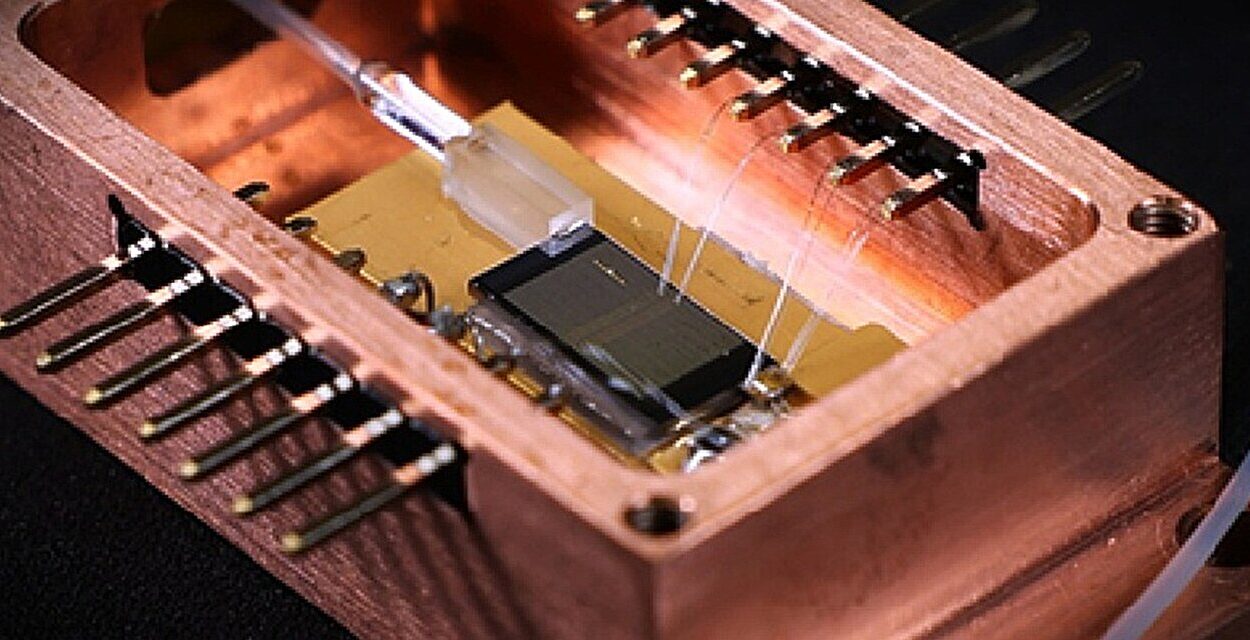In the depths of CERN’s underground laboratories, where protons are hurled at near-light speeds around a 27-kilometer ring, a quiet revolution in precision physics has taken place. The LHCb experiment, one of the major detectors at the Large Hadron Collider (LHC), has accomplished what was once thought unattainable in the chaotic world of high-energy proton collisions. In a new paper, submitted to Physical Review Letters and available on the arXiv preprint server, the LHCb collaboration reports the first dedicated measurement of the mass of the Z boson at the LHC—a feat as intricate as it is profound.
More than four decades since its discovery, the Z boson continues to be a cornerstone of particle physics. Measuring it with ever greater accuracy is not simply an academic exercise. It is a necessary step in the relentless pursuit to confirm—or challenge—the Standard Model, our current best description of the fundamental particles and forces in the universe. The latest LHCb result is not just a number; it is a statement about the power of modern experimentation and the potential of next-generation colliders.
The Mysterious Strength of the Weak Force
To grasp the weight of this breakthrough, we must understand what the Z boson represents. The Z boson, along with its electrically charged cousin the W boson, mediates the weak nuclear force—one of the four fundamental forces of nature, alongside gravity, electromagnetism, and the strong nuclear force. This weak force is responsible for processes like radioactive decay and plays a key role in the nuclear fusion that powers the Sun.
Discovered at CERN in 1983 by experiments at the Super Proton Synchrotron (SPS), the Z boson confirmed a central pillar of the Standard Model. This triumph was quickly followed by a Nobel Prize in Physics in 1984, awarded to Carlo Rubbia and Simon van der Meer. Measuring the Z boson’s mass with ever-greater precision has since been a critical endeavor, essential not only for understanding the weak force itself but also for setting limits on or identifying deviations that could hint at new physics beyond the Standard Model.
Mass Matters: Why Precision is Everything
The mass of the Z boson, approximately 91 billion electronvolts (GeV), makes it one of the heaviest known elementary particles—second only to the Higgs boson and the top quark. This mass isn’t just a static number; it’s a delicate quantity influenced by the quantum fields that pervade the universe. In the mathematical world of quantum field theory, particles do not exist in isolation. They are continually influenced by a haze of virtual particles flickering in and out of existence.
That means the Z boson’s mass is sensitive to many underlying factors in the Standard Model, including the strength of the weak force and the properties of particles like the top quark and Higgs boson. Any deviation from the expected mass could indicate that something is missing from our current understanding—perhaps a hidden particle, an unknown interaction, or even a deeper layer of reality.
A Revolutionary Result in a Chaotic Environment
Until now, the most precise measurements of the Z boson mass had come from electron-positron colliders like the Large Electron-Positron Collider (LEP) at CERN and the CDF experiment at the Tevatron in the U.S. These machines offered relatively “clean” collision environments, ideal for high-precision measurements. In contrast, the LHC smashes together protons—composite particles made of quarks and gluons—which results in a far more complex spray of particles. Extracting a precise measurement of any single event in this particle maelstrom is enormously challenging.
Despite these hurdles, the LHCb collaboration pulled off what was once thought implausible. Using data from 2016, recorded during the LHC’s second run at a collision energy of 13 TeV, researchers zeroed in on an exceptionally clean sample: 174,000 Z bosons decaying into pairs of muons. Muons, heavier cousins of the electron, interact weakly with other particles, making them relatively easy to detect and track in a detector.
The resulting measurement—91,184.2 ± 9.5 MeV—is staggeringly precise. The uncertainty, less than a hundredth of a percent, rivals the best measurements ever made and nearly matches the theoretical precision of the Standard Model prediction, which stands at 8.8 MeV.
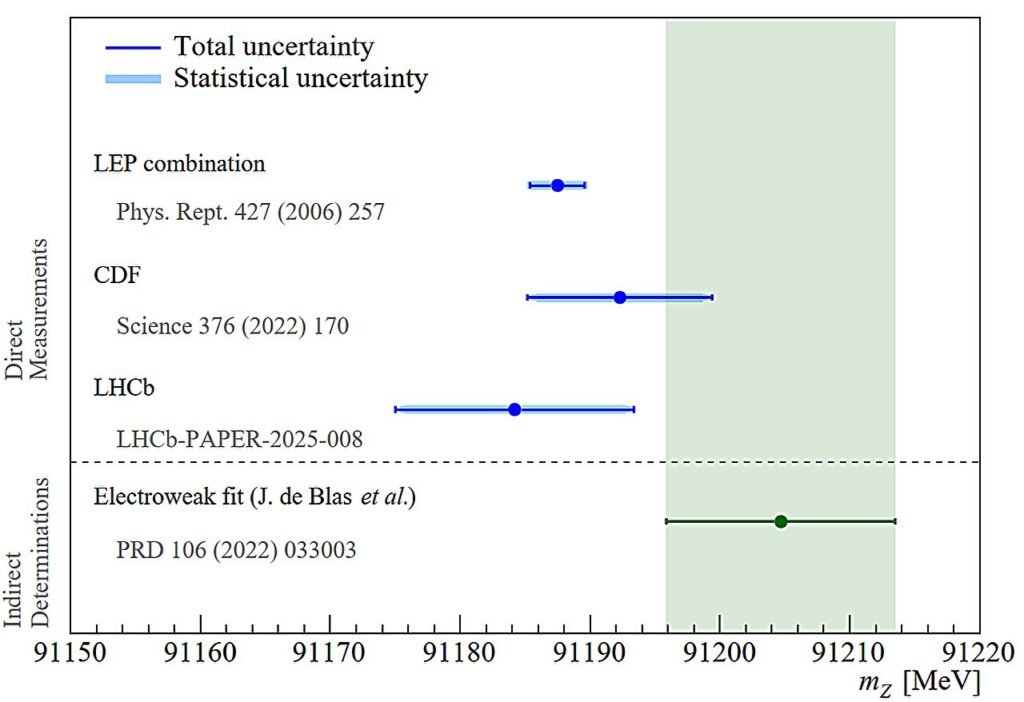
A Game-Changer for the LHC
This landmark result demonstrates something profound: precision measurements once thought exclusive to electron-positron colliders can now be achieved in the messy environment of the LHC’s proton-proton collisions. The implications are enormous. With future datasets, not only from LHCb but also from the ATLAS and CMS experiments, the precision can be pushed even further.
Crucially, the uncertainties in each experiment are largely uncorrelated. This independence means that averaging the results from multiple LHC experiments will reduce the combined uncertainty, sharpening the clarity of our picture of the Z boson. For the first time, it seems entirely within reach that the LHC could surpass the precision benchmarks set by LEP—an idea once dismissed as implausible.
LHCb’s spokesperson, Vincenzo Vagnoni, emphasized the magnitude of this leap, noting that the High-Luminosity LHC (HL-LHC)—the forthcoming upgrade to the LHC—has the potential to push precision even further, possibly exceeding what LEP achieved. What once seemed inconceivable is now on the horizon.
Why It Matters: Beyond the Numbers
A new measurement of the Z boson mass might sound like a dry technical achievement, but it cuts to the heart of one of science’s biggest questions: Is the Standard Model the final word on the universe’s fundamental building blocks? Or is there something more—hidden particles, forces, or dimensions waiting to be discovered?
The Standard Model, for all its elegance and accuracy, has known shortcomings. It does not account for dark matter, dark energy, or gravity. Nor does it explain why particles have the masses they do, or why there are three generations of matter. It’s a beautiful framework—but an incomplete one.
Precision measurements are one of the few tools we have to test the Standard Model at the deepest levels. When predictions match observations, we reaffirm the model’s power. But when they don’t, we may be standing at the edge of a new frontier. Just as the precession of Mercury’s orbit hinted at Einstein’s general relativity, an unexplained deviation in the Z boson’s mass could herald the next great leap in physics.
The Future: Toward the FCC and Beyond
The LHCb’s result is more than just a technical milestone. It is a pathfinder for future experiments. CERN is already planning the Future Circular Collider (FCC-ee), a proposed electron-positron collider designed specifically for ultra-precise studies of the Z boson, W boson, and Higgs boson. The aim is to reduce uncertainties by another order of magnitude, potentially unlocking hidden cracks in the Standard Model.
But the LHC still has a long life ahead. With the High-Luminosity upgrade, the data floodgates will open. The LHCb, ATLAS, and CMS collaborations will be armed with richer datasets, more sophisticated algorithms, and refined detector technologies. The coming decade will be a golden era for precision physics—and the Z boson will be at the center of it all.
Conclusion: A Particle and Its Legacy
The Z boson, though discovered over 40 years ago, remains a linchpin in the architecture of modern physics. Its mass is not just a number—it is a fingerprint of the universe’s fundamental structure. The LHCb experiment’s latest measurement represents not only a technical triumph but also a philosophical one: that through ingenuity, persistence, and cutting-edge science, we can reveal truths buried deep within the fabric of reality.
As the LHC’s detectors continue to churn through data and push the limits of what’s measurable, the spirit of this achievement will endure. It is a reminder that even in a universe governed by chance and complexity, human precision can carve out meaning, revealing the elegant patterns that hold everything together.
Reference: Measurement of the Z-boson mass, arXiv (2025). DOI: 10.48550/arxiv.2505.15582
